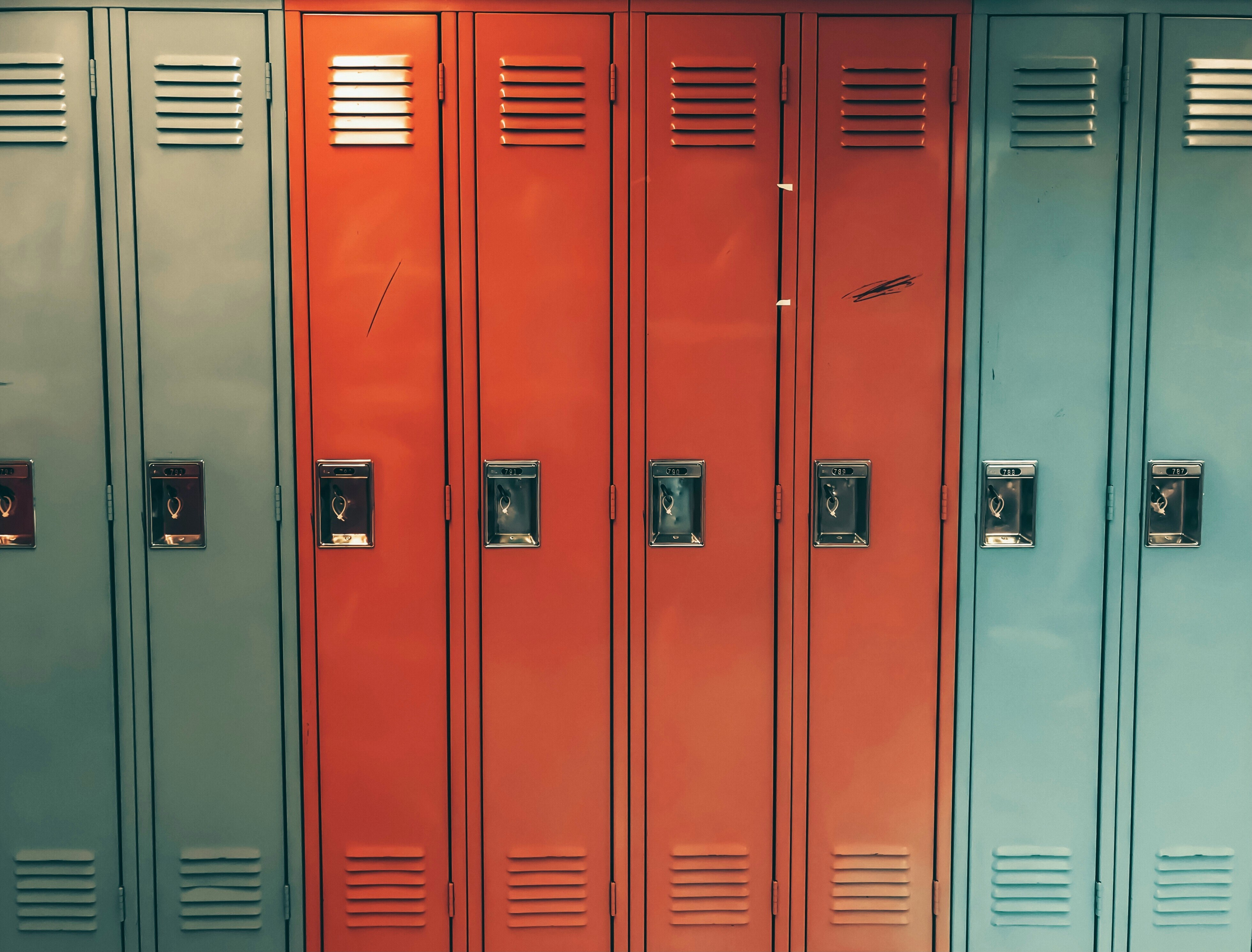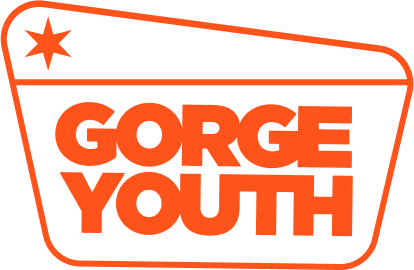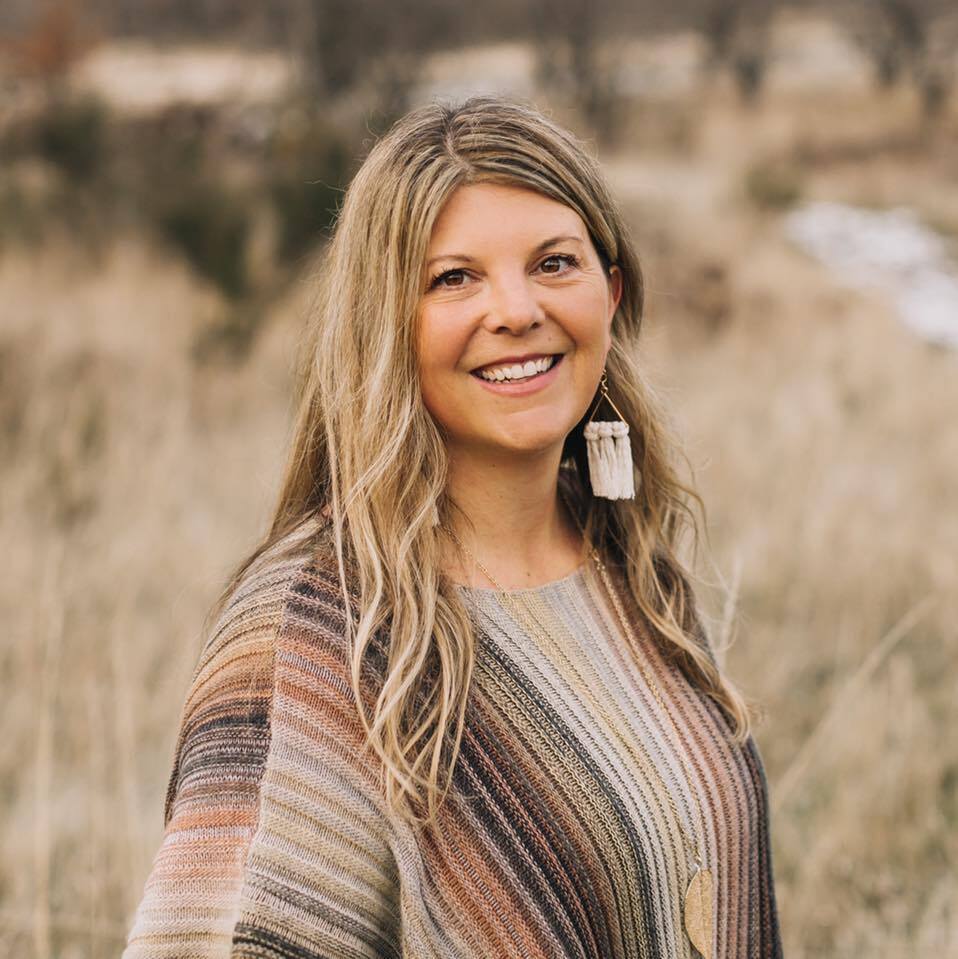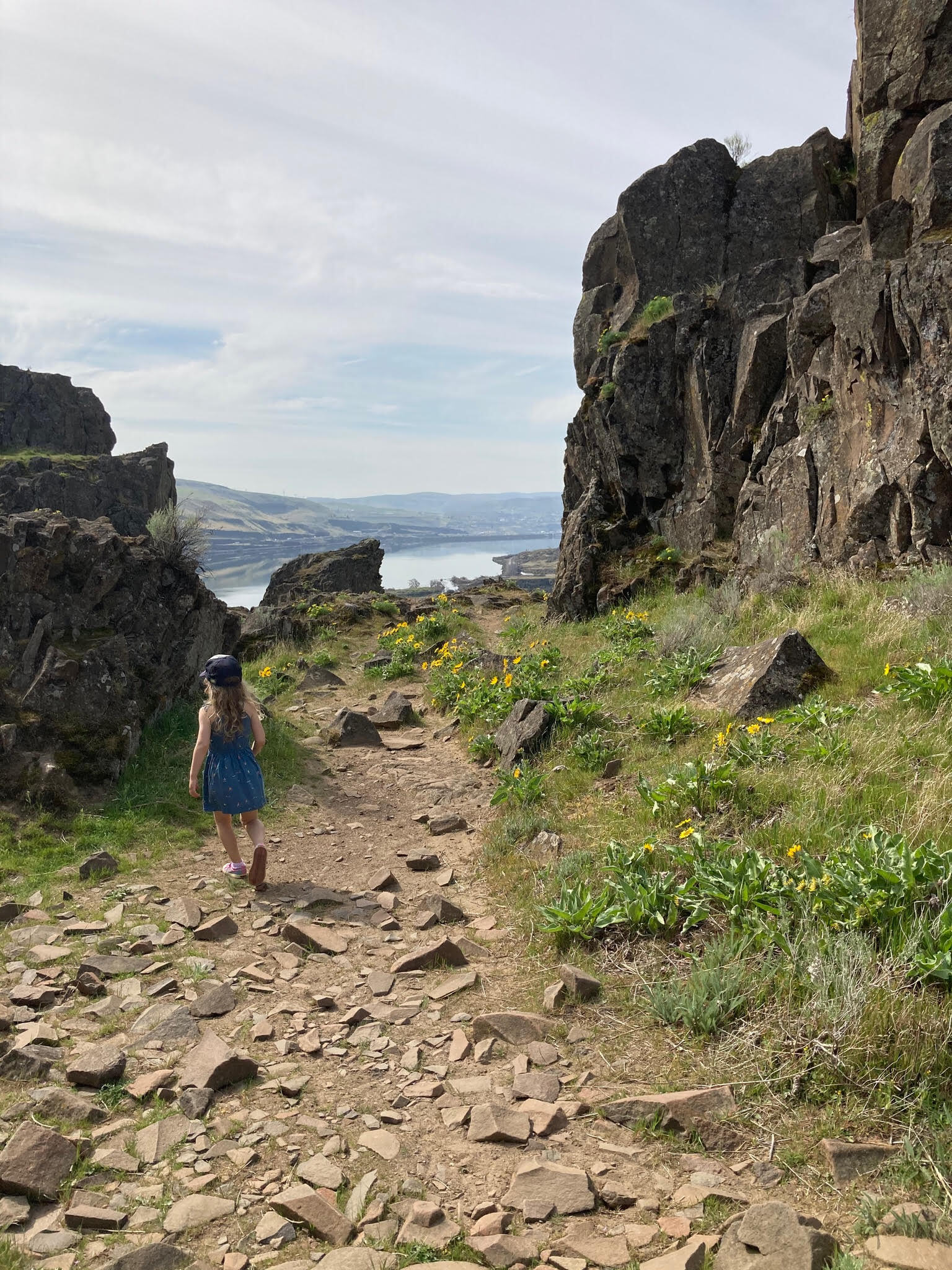Making the Leap: Transitioning from Elementary to Middle School
If you’re anything like me, the thought of your child starting middle school feels like stepping into the great unknown. Gone are the predictable elementary school schedules and regular communication with teachers. Instead, you start hearing about A/B days, lockers, and parent-teacher conferences that feel like rapid-fire speed dating. As our family prepares for this transition in 2025, I decided it was time to get some real answers. I spoke with teachers, school counselors, parents, and students to uncover what to expect, how to prepare, and what makes middle school both exciting and (let’s be honest) a little nerve-wracking.
March 31, 2025

Take comfort in knowing that the general feedback from current students and parents is positive—many kids aren’t just adjusting but thriving in our Hood River public middle schools.
Middle Schools in Hood River County
Hood River County has two public middle schools serving approximately 850 students, according to the latest Hood River School District profiles:
- Hood River Middle School (HRMS) – Located on May Street, centrally positioned near the city of Hood River.
- Wy’East Middle School – Located in the Hood River Valley, near the Hood River Fairgrounds, between Hood River and Parkdale.
This blog post focuses on middle school in Hood River County, but I’d love to collaborate with fellow moms and writers to create similar guides for White Salmon, Trout Lake, and The Dalles. If you’re interested, let’s connect!
Easing the Transition to Middle School
Starting middle school is a big step—new buildings, more independence, and unfamiliar routines. To help make this transition smoother for incoming 6th graders, both Hood River Middle School (HRMS) and Wy’East Middle School offer a variety of programs and supports designed to ease students (and families) into this next chapter with confidence.
Keeping 6th Graders in Their Own Lane (Literally)
One of the strategies both schools use is creating a smaller, more familiar environment for 6th graders within the larger school community.
- Dedicated 6th Grade Areas:
At HRMS, most 6th grade classrooms and lockers are located on the west side of the building, forming a distinct wing where younger students can settle in with a little more breathing room.
At Wy’East, most 6th grade classes are clustered near the PAC area, giving students a consistent hub of activity that feels more contained and manageable. - Limited Hallway Interaction:
While electives may take students into other areas of the school, core classes for 6th graders remain in their designated spaces. This helps reduce the overwhelming feeling of navigating a large campus with older students during the early weeks.
Preview Events to Get Acquainted Early
- 5th Grade Field Trip & School Visit – April 16
All 5th graders from across the district will visit their future middle schools on Wednesday, April 16. During this special orientation, they’ll meet peer mentors (WEB leaders at HRMS, Flight Crew at Wy’East), explore the school layout, hear about class schedules and electives, and begin to picture themselves as middle schoolers. - Family Orientation Nights
These evening events offer families a chance to get the scoop on school expectations, communication platforms, class offerings, and more:- HRMS’s Panther Preview takes place the evening of Thursday, April 17 from 6PM - 7:30PM.
- Wy’East’s 5th Grade Family Night is scheduled for Tuesday, April 23 from 5:00–7:00 PM. Students and families will tour the school with help from Flight Crew, the 8th-grade leadership team.
WEB Day – Just for 6th Graders
Both schools kick off the year with a special orientation day just for 6th graders called WEB Day (Where Everybody Belongs). On this day, 7th and 8th graders stay home so new students can get comfortable in the school without the pressure of crowded hallways or lunchrooms.
Each 6th grader is placed into a small group led by 8th-grade mentors (WEB Leaders or Flight Crew) and a supervising staff. These groups spend the day engaging in fun, hands-on activities that build connection, confidence, and a sense of belonging.
Highlights of WEB Day include:
- Touring the school and learning daily routines
- Meeting teachers
- Practicing with lockers
- Getting familiar with classrooms and class transitions
By the time school officially begins for all grades, 6th graders have a full day of experience under their belts—and some friendly older students they can count on in the weeks ahead.
Class Selection & Understanding the A/B Schedule
How A/B Days Work
Both Hood River Middle School (HRMS) and Wy’East Middle School follow an alternating A/B schedule. This means students take one set of classes on “A” days and a different set on “B” days. The schedule flips each week:
- Week 1:
A Days – Monday, Wednesday, Friday
B Days – Tuesday, Thursday - Week 2:
A Days – Tuesday, Thursday
B Days – Monday, Wednesday, Friday
This rotating model allows students to engage with a broader range of classes throughout the week without overwhelming them with too many transitions each day.
Core Classes vs. Electives
Core subjects—Math, Science, Social Studies, and English Language Arts (ELA)—meet daily at both schools.
- At Wy’East, there’s an additional class called WICOR (Writing, Inquiry, Collaboration, Organization, and Reading), which incorporates Social Emotional Learning, school announcements, and a built-in opportunity to catch up on core subjects.
- HRMS has a similar setup through an Advisory period, which functions as a homeroom at the end of the day.
Electives and specials typically follow the A/B schedule, so students alternate between them every other day. Some electives, like Band, may meet daily.
💡 Note: Students receiving Learning Lab (IEP support) or language services (ELD/ELL) may have those sessions in place of one elective.
The Trimester System & Elective Variety
Both middle schools run on a trimester system, giving students the chance to explore different interests over the course of the year. Some electives are required—like P.E. (two trimesters) and Health (one trimester)—while others are chosen based on student interest.
Here’s a sample of the elective offerings students might encounter:
- HRMS offerings: STEM, Robotics, Art, Band, Drama, Leadership, Music Enrichment, Yearbook/Newspaper, Strength & Fitness, Graphic Novels, Sports & Games, SkateMaker, FACS (cooking, gardening, green design)
- At Wy’East, electives fall into two types:
- Yearlong classes like Band, Choir, or Spanish
- Rotating trimesters, where students cycle through courses like STEM
💡 Parent Tip: Electives may vary from year to year—or even trimester to trimester—based on staffing and interest. Not all electives listed above are guaranteed to be available every year.
Elective Selection Process
After orientation, students receive a form (typically a Google survey) to rank their elective preferences. This is usually filled out and submitted at school.
While this system ensures every student turns in their choices, several parents mentioned they didn’t see the form or know which electives their child selected. While it's great that kids are encouraged to take ownership, a bit of collaboration could help guide them toward electives that play to their strengths.
Sample 6th Grade A/B Schedule
Here’s what a sample week might look like for a 6th grader:
A Days
✅ Math
✅ Social Studies
✅ Robotics
✅ Lunch & Recess
✅ Science
✅ ELA
✅ Band
✅ Advisory
B Days
✅ Math
✅ Social Studies
✅ P.E.
✅ Science
✅ Lunch & Recess
✅ ELA
✅ Band
✅ Advisory
Student Insights: Classes, Teachers & Day-to-Day Life
We spoke directly with current middle school students and parents to get an inside look at what life is really like at Hood River Middle School and Wy’East Middle School. Here’s what they had to say.
What Students Love About Middle School
Across the board, students mentioned that one of the biggest (and best) changes from elementary to middle school is switching classes throughout the day. They enjoy the variety, the change of pace, and getting to see different teachers throughout their schedule.
Hood River Middle School Highlights and Anecdotes
- Band and Choir are major favorites—many students praised Mr. Tell, the band teacher, for making that class one of the best parts of their day.
- Theatre (available for 7th and 8th graders) is also popular, with Teacher Elam and Mr. Tell running a fun and creative program.
- ELA with Ms. Douglas received several shout-outs from students.
- Mrs. Norton’s advisory was mentioned positively by a number of students.
- Mr. Rolan stood out as a favorite teacher, both in Compacted Math and the standard math track.
Wait, what’s compacted math?
Also called accelerated math at Wy’East, this is a faster-paced curriculum for students who excel in math and are ready for more challenge. It typically combines 6th and 7th grade math into one year and introduces Algebra early. Students are placed in this program based on teacher recommendations and assessment scores—and if they pass 8th grade Algebra with an A, it can count toward high school credit!
- Some students and parents expressed concern about the high turnover of substitute teachers in core classes, particularly math. Frequent changes and the use of long-term subs left some families feeling their students weren’t receiving consistent instruction and may be falling behind.
- Consistent Counseling: One feature many parents appreciate is that students have the same counselor from 6th through 8th grade. This helps build familiarity and trust.
- Lunch Club: Not every student wants a loud, active break. The HRMS library becomes a quiet recharge zone during lunch, with games, books, and a calm vibe. One student described it as their “reset button” for the day.
- Syllabus Tip: At the start of each trimester, students receive a syllabus for new classes. Parents recommend keeping these—they outline the curriculum and include teacher contact info.
- Behavior Tracking: At HRMS, repeated issues like tardies, disruptions, or refusal to work may result in a referral. This is similar to the LOIs (Loss of Instruction) used in elementary school. Consequences range from a reflection sheet to lunch detention or a call home.
PE & Locker Room Notes
Middle school is often the first time students use locker rooms for changing into PE gear. Here’s what to know:
- Students are required to dress down and will be issued gym shirts and shorts.
- 💡 Parent Tip: Keep a pair of sneakers in your child’s locker specifically for PE days.
- If you’re having flashbacks to those dreaded post-PE showers from our school days—don’t worry. Showers aren’t required
- There are shared and private spaces in each locker room. If your child needs more privacy, reach out to their counselor or PE teacher—accommodations are available.
- Some students opt to come to school in PE clothes and just change shirts or layers afterward.
Wy’East Middle School Insights (More to come!)
We’re still collecting feedback from Wy’East students and families—more to be added soon! In the meantime, here are a few takeaways from current Wy’East parents:
- Wy’East uses a 4-point grading scale, and students are encouraged to retake assessments after getting extra help—either from home or with their teachers.
- A teacher who is also a Wy'East parent shared this:
- My sons came from May Street and knew very few kids going in, but before long, they made all kinds of new friends with different backgrounds and experiences.
- Keep up with HAC app and stay in touch with teachers. It’s helpful to check in before big unit assessments.
- If your child says they have no homework, encourage them to read, practice on IXL, or email a teacher to ask how they can strengthen a grade or skill.
- Middle school days are long—seven transitions in a day can be a lot. A good night’s sleep makes all the difference.
Locker Stress, Passing Period & School Supplies
For many students, middle school is the first time they'll be using a locker, and it's one of the most common sources of stress for incoming 6th graders. Unlike elementary school, where most students kept their belongings in a cubby or desk, having a locker means remembering a combination, opening it quickly between classes, and keeping everything organized.
Some students worry about getting stuck with a jammed lock, forgetting their combination, or not having enough time to grab their things between classes. The good news? This stress is completely normal, and within a couple of weeks, lockers become second nature!
Another common worry is passing period—the short time students have to get from one class to the next. During the first week, it’s normal for kids to feel nervous about being late. But don’t worry—there’s a lot of grace built into the first month of school. Teachers understand that students are adjusting, and everyone gets time to settle in.
Students get a few minutes to move between classes, and attendance is taken in every period (unlike elementary school). A tardy here or there isn't the end of the world, but if a student has three unexcused tardies to the same class, they may receive a consequence. If your child is feeling really stressed about transitions, reach out to their teacher—there’s usually a way to help ease the pressure. For reference, the longest walk at HRMS is from the 6th-grade building to the band room—and even that is totally manageable.
💡 Hot Tip for Parents: Go to Ace Hardware and buy a $4.95 combination lock so your child can practice over the summer. One student even became a first-week locker helper because they had mastered their combo lock early!
By the time school starts, your kiddo will be a locker pro. 😊
(HRMS lockers are the classic 3-number kind: turn right to the first number, left past the second number once, then right to the third. Old school, but effective!)
What About School Supplies?
💡 Good news: Like elementary school, parents don’t need to buy anything!
- The school provides a planner, iPad, pens, pencils, notebooks, and an school issued organizer (think old-school Trapper Keeper) that they will carry from class to class
- Backpacks stay in lockers during the day—students only carry materials between classes.
A Shift in Communication
One of the biggest adjustments in middle school—for both parents and students—is the shift in communication, not only with teachers but also with your child as they step into their newfound independence.
In elementary school, parents were used to frequent TalkingPoints updates, handouts stuffed into backpacks, or even volunteering in the classroom. But in middle school, the focus shifts toward student autonomy and personal responsibility. While that’s a great step for growth, it can sometimes leave parents feeling a bit out of the loop.
Most assignments and classwork will now be turned in through Google Classroom, so it’s helpful for students to get comfortable navigating that system and also for parents to know how to access their child’s Google Classroom. If you need to connect with a teacher or counselor, TalkingPoints is still a great tool, and email works too!
Direct communication from teachers may be less frequent than in earlier grades, with updates often shared via email or announced directly to students during class. To stay connected, try making open-ended conversations about school a regular habit—asking about their classes, assignments, or what they liked (or didn’t!) during the day can help bridge the gap. And don’t forget to follow HRMS on Instagram for school-wide announcements and reminders.
If a student needs to reach you during the day, they can always use the front office phone, just like in elementary school. Since personal device use (phones, Apple Watches, etc.) are not allowed during the school day–unless it’s for health reasons—it’s a good idea to walk your child through how to send a school email or ask to call home from the office if needed.
How to be in the know? JOIN PTO! That is the way to get involved in the school.
Parent-Teacher Conferences: A New Format
Parent-teacher conferences in middle school also reflect this shift in communication and structure. Unlike the more personal meetings of elementary school, middle school conferences are designed to accommodate the larger number of students and families:
- All teachers set up in the cafeteria at individual tables.
- Parents move from teacher to teacher, having brief conversations—hence the “speed dating” comparison.
- Meetings are quick, offering only a small snapshot of your child’s progress. Translators are available for Spanish speaking families.
While the middle school format allows for more efficiency, many parents have shared that it can make meaningful conversations with teachers more difficult. If you have specific concerns or need a deeper discussion, it’s best to email the teacher directly to request a separate meeting.
Remember, advocating for your child is just as important in middle school as it was in elementary school. Reaching out when something feels off—or when your student needs extra support—is always a good idea.
HAC App: Your Go-To for Progress Reports
The Home Access Center (HAC) app is a must-have for middle school parents. It gives you access to your child’s class schedule, assignments, progress reports, test scores, grades, attendance, and more. It’s one of the best places to stay informed—just be careful not to check it too often!
Many teachers recommend checking once a week—Thursdays are ideal. That way, students have time to gather any missing or corrected work and finish it over the weekend to turn in on Monday. It’s a helpful routine that supports accountability without becoming overwhelming.
While middle school is all about helping students take ownership of their education, parents still play an important role in staying connected—especially during the transition from elementary school. Checking HAC weekly is a great way to strike that balance.
💡 Bonus Tip: Download the GradeWay app (available in the app store). It’s an easy, mobile-friendly way to view grades, absences, and tardies at a glance. Just log in using your student’s HAC credentials (student email and ID number—with two zeros at the beginning). Super user-friendly and great for staying in the loop!
Parent Tip: Although the middle school introduced the Gradeway App this year, not all teachers update it consistently. Some teachers prefer to use Google Classroom for assignment submissions, and grades may not appear in Gradeway until the teacher enters them manually. It's possible for a student to appear fully caught up in Gradeway while still missing major assignments listed in Google Classroom. To stay fully informed, parents are encouraged to regularly check both platforms.
Middle School Sports & After-School Activities: What to Expect
Middle school opens up a whole new world of opportunities—especially when it comes to sports, clubs, and enrichment programs. Whether your child is eager to compete in school-sponsored athletics, try out a new hobby, or simply stay engaged after hours, there’s something for everyone.
School-Sponsored Sports
Middle school is often students’ first chance to represent their school on an athletic team. Sports are offered in three seasons and are a great way to stay active, make new friends, and build confidence.
Seasonal Offerings:
- Fall: Volleyball, Football, Cross Country
- Winter: Basketball, Wrestling
- Spring: Track & Field
6th Grade Eligibility:
6th graders are eligible to participate in Cross Country, Wrestling, and Track, while Football, Volleyball, and Basketball are typically reserved for 7th and 8th graders.
💡 Parent Tip: Planning ahead? Schedule your child’s sports physical before school starts—it’s good for two years and will save time during sign-up season.
After-School Opportunities at Wy’East
Wy’East Middle School offers a federally funded after-school program called EXCEL, which provides a wide variety of clubs and enrichment activities designed to engage students outside of the classroom.
Popular EXCEL offerings include:
- Robotics
- Drama
- Mountain Biking
- Art Club
- Homework Help
This program is free to students and is a fantastic way to build new skills, explore interests, and stay connected after school.
Community & Club Sports
Not all sports are school-sponsored—and that’s where local leagues and community programs come in. These clubs offer great alternatives for 6th graders looking to play on teams or try out a new sport.
Fall:
- Columbia Gorge Youth Soccer (6th–8th grade)
Winter:
- 6th Grade Basketball (Parks & Rec)
- Hood River Club Basketball
- Hood River Volleyball
- Youth Nordic Ski Team
- Mt. Hood Meadows Ski & Snowboard Program
💡 A favorite: the Middle School Ski Bus runs on Thursday nights!
Spring:
Year-Round:
💬 Parent Insight: Many families said they love middle school sports because there are no weekend practices, most training happens right after school, and they’re a great way to build friendships.
Adventure-Based Fun: 80’s Walk & Roll Club
For something a little different, check out the 80’s Walk & Roll Club, an after-school adventure program for 5th–8th graders focused on walking and biking safety, wayfinding, and exploring the local area.
- When: Two afternoons a week after school
- Where: Meets at the HRMS library
- What: Students plan their own routes and explore up to two miles around campus by foot or bike. They’ll visit favorite Hood River spots while listening to music, learning navigation skills, and earning treats or gift cards from local businesses.
💡 This is a great option for kids who are biking or walking to school for the first time.
A Quick Aside on E-Bikes & Safety…
Okay, this deserves its own blog post (and is getting one!)—but many parents we spoke with raised concerns about helmet-less middle schoolers flying through town on e-bikes. As more kids use e-bikes to get to and from school, it's a good idea to talk about speed, safety, and visibility. Stay tuned—we’ll dig into this more soon!
Final Thoughts: Navigating the Middle School Transition
Middle school is a big leap for both kids and parents—socially, academically, and emotionally. While there will be challenges, there are also incredible opportunities for growth, learning, and building confidence.
For many parents, this transition may feel more daunting than it does for their kids (myself included!). Middle schoolers are often ready and eager for this next step—embracing greater independence, new learning opportunities, and expanded social circles. Meanwhile, parents may find themselves grappling with the changes in communication, the increasing autonomy of their child, and the realization that their little one is growing up.
Take comfort in knowing that the general feedback from current students and parents is positive—many kids are not just adjusting but truly thriving in our Hood River public middle schools.
While the unknowns can feel daunting, I hope this guide provides clarity and reassurance as you (we) navigate this new chapter.
From a mental health and developmental perspective check out the blog post Helping Kids Thrive in the transition from Elementary to Middle School by local mental health therapist Anya Dassel.
Looking for healthy ways to manage tech use in middle school - blog post by Andrea Davis from Better Screen Time coming soon. Please join us for Gorge Families Unplugged - a supportive community gathering to talk about tech challenges and strategies for the middle school years.
Have insights to share?
Do you have tips, experiences, or questions about middle school in Hood River? Drop a comment below—I’d love to hear from you!
Want to Help Expand This Guide?
I’d love to collaborate with fellow parents and writers to create similar guides for White Salmon, Trout Lake, and The Dalles. If you're interested, let’s connect!
We’d love to hear from you! Whether you have a question, a suggestion, or want to get involved, Gorge Youth would love to connect with you.





